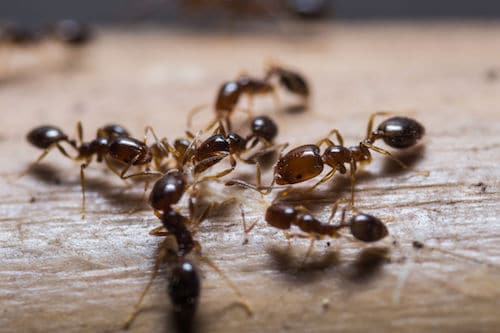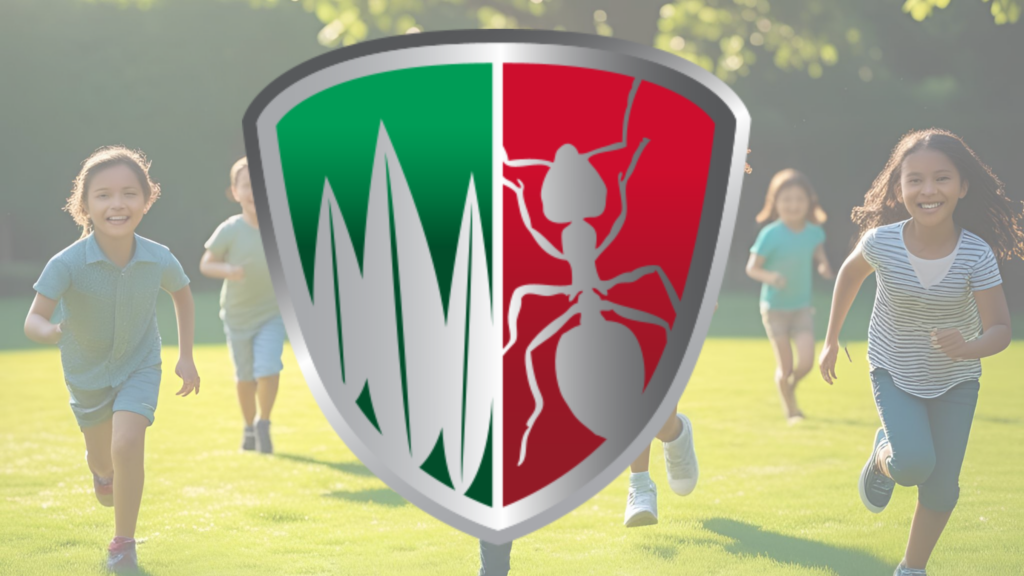
Ant control in our area can be a serious matter, since two types of these pests can cause damage to your home or an allergic reaction in response to a sting. Carpenter ants and fire ants can both become problems this time of year as the temperatures rise and heavy rains are more frequent. Learning more about them and knowing what steps to take if you spot either of these ants in your home or yard can go a long way toward protecting your house and family.
Fire Ants
According to the University of Florida’s Institute of Food and Agricultural Sciences (UF/IFAS), there are two types of fire ants in Florida. The most common species is the red imported fire ant, which is native to South America and arrived in the U.S. around 1940. Less common is the tropical or native fire ant. As UF/IFAS advises, it’s important to know which species of fire ant you’re dealing with so that the right control measures can be taken. To ensure the extermination of fire ants, the best course of action is to contact a professional pest control provider. At Turner Pest Control, our entomologists and technicians have the training and experience to recommend the ant control plan that’s right for you.
Getting rid of fire ants is not a DIY project. Some homeowners pour flammable liquids on fire ant mounds and ignite them or pour boiling water on them, but these are partially effective at best and dangerous at worst.
Where to look for fire ants
The red imported fire ant lives in mounds with a span of about 18 inches, and will make its home just about anywhere, including in your lawn, under patios and the edges of sidewalks, under concrete driveways and house foundations, and even in electrical boxes. Other spots to look for fire ants include compost piles, mulch around flowerbeds, and in pavement cracks. A fire ant colony doesn’t like saturated soil, so it may move indoors or head for higher ground after a heavy rain.
When fire ants sting
Most species of fire ants will aggressively defend their territory and will work as a group to attack an intruder. Children, pets and home gardeners can easily become victims if they step on a mound, and the ants will continue to attack until the threat is over. Individual ants, unlike several other types of pests that sting just once, can sting over and over again during an attack.
The sting of a fire ant isn’t pleasant for anyone, but for those who are allergic to fire ant venom, a sting can be life-threatening. The sting itself can be very painful, but doesn’t persist for most people. The skin irritation, however, can last for days, with the itching continuing to worsen. For those who are allergic, there is the risk of anaphylaxis, which the Mayo Clinic describes as the release of chemicals by an overreacting immune system that can cause shock, with symptoms such as narrowing airways and a rapid drop in blood pressure. Untreated with epinephrine or an immediate visit to an emergency room, anaphylaxis can be fatal.
If you are stung but don’t have a dangerous reaction, there are some home remedies for fire ant stings that you can try to lessen the itching and irritation. These include hydrocortisone cream, antihistamines, oatmeal baths and cold compresses.
Carpenter Ants
Carpenter ants don’t feed on the cellulose in wood as termites do, but they are still aptly named since they excavate wood to make space for their nests. If they’re digging out the wood that holds up your home in large enough numbers, they can severely compromise the structural soundness of your home, resulting in costly damage. Carpenter ants are one of the top five pest ants in the country.
Where to look for carpenter ants
As with so many of the pests we see here in Northeast Florida, carpenter ants love the moisture they find in damaged or damp wood. Outdoors, that may be in rotten logs, tree stumps, dead trees, or even live trees. Indoors, they’ll head for spots where moisture is high, such as wood that’s been affected by a plumbing leak, and spaces around sinks, tubs and dishwashers. Some of their preferred places are wood that’s already been compromised by other pests. With humidity now on the rise, you may notice the carpenter ant population increasing on your property.
UF/IFAS information on the habits of carpenter ants notes that a mature colony will send out flying reproductives, or alates, from spring to fall, and that you may see them foraging in your house at night for sweets, such as sugary items and spilled sodas.
How to prevent carpenter ant problems
Again, like other Florida pests, carpenter ants will take advantage of the “highways” provided to them to get inside your home. Keep branches, limbs and stacks of firewood well away from your home, and maintain good seals around utility pipes and cables that come through your walls. Be sure to fix water leaks promptly and keep drainage systems clear. Read our blog post on Tips for Ant-Proofing Your Home for more ways to keep all types of ants outside.
For best results, call Turner’s ant control experts
There are more than 700 species of ants in the U.S. While we’re glad to report that not all of them live in our neighborhood, the ones that do can pose a health threat and a risk of damage. Locating and eradicating ant nests and mounds should be left to licensed pest professionals to ensure the problem is solved. Contact us at the first sign of ant trouble—we’ll be glad to provide a free, no-obligation estimate on our ant control services.



